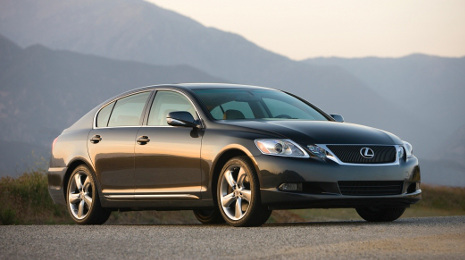What led to CPO gaining traction?

2010 Lexus GS 350. Lexus was at the forefront of CPO's birth in the 1990s
By subscribing, you agree to receive communications from Auto Remarketing and our partners in accordance with our Privacy Policy. We may share your information with select partners and sponsors who may contact you about their products and services. You may unsubscribe at any time.
ATLANTA –
Since humble beginnings in the early-to-mid 1990s, the certified pre-owned business has picked up steam in the past decade or so, particularly in the last five years.
Autodata Corp. data indicates that 2011, 2012, 2013 and 2014 were each record-breaking years for CPO, and 2015 is on pace to be an all-time high, as well.
So, what factors over the last couple decades have pushed CPO to its current level, where it’s growing and setting records every year?
There are a few factors at play, says Steve Lind, who is the executive vice president of operations at Cox Automotive Media Group.
For one, he said, luxury automakers have rolled out more vehicles that would be considered “entry-level,” at least from a luxury standpoint.
Having hese additional options can increase the number of luxury car owners, adding to the strong product coming back into the used market. Thus, dealers have additional luxury vehicles to use in CPO inventory, Lind said. And having that CPO customer can lead to a new-car customer down the road.
Subscribe to Auto Remarketing to stay informed and stay ahead.
By subscribing, you agree to receive communications from Auto Remarketing and our partners in accordance with our Privacy Policy. We may share your information with select partners and sponsors who may contact you about their products and services. You may unsubscribe at any time.
Manufacturers have also come to realize the importance of certified, in that it can support residual values, which in turn can support new-car sales.
“That just helps the whole system. So I think there’s been investment there,” Lind said.
“And I think that the consumers and their shopping patterns tell us that they’re becoming increasingly aware of it,” Lind said, “understanding what I’m getting for the certification process, a greater trust in knowing how near-new this thing is, and what it means (to be covered) all the way out to 100,000 miles.”
Lind was talking with Auto Remarketing during a media visit last month at Cox Automotive headquarters in Atlanta. During our discussion, he also pointed out that people are holding on to their cars longer. With the kind of economic and spending mindset that consumers often have, buying CPO often makes sense for buyers looking to make their vehicles last.
The cost-to-own element of certified is not one to be overlooked. The “value of the vehicle’s ownership over time” should be part of the educational conversation, Lind said, particularly as many Americans are “conscious of our discretionary spending.”
And many consumers, he said, make shopping decisions based on monthly payments.
“You can get a darn-near-new vehicle, perhaps in a class above what you were looking for, at a monthly payment you can afford inside the CPO (program),” Lind said.
It’s not just more affordable in terms of being a lower price car at time of purchase than a new ride, he noted. The savings can also come from the lower depreciation cost for the consumer who is buying the CPO vehicle.
He explained that the 2- or 3-year-old certified vehicle has “gone through most of its depreciation cycle” already.
So, the consumer buying that car isn’t going to really feel that hit during the time he or she actually owns the car.
And Lind believes the industry can do a “better job” at communicating this.
The affordability factor also ties into what Lind says resonates with shoppers about CPO.
“I think they value greatly that they know this (car) should be a lower cost-to-own vehicle over time for me. This is certified. If I have a problem, I’m covered,” Lind said. “I think that matters even more to people.
“I do think, also, there’s been a better marketing/educational effort, both by the providers of the certification and partners like us and (those) similar to us to provide better ways for people to shop and become aware of the CPO product and what it means to own (a CPO car),” he added. “I think those coming together has produced awareness and confidence in the buying process, for sure.”


